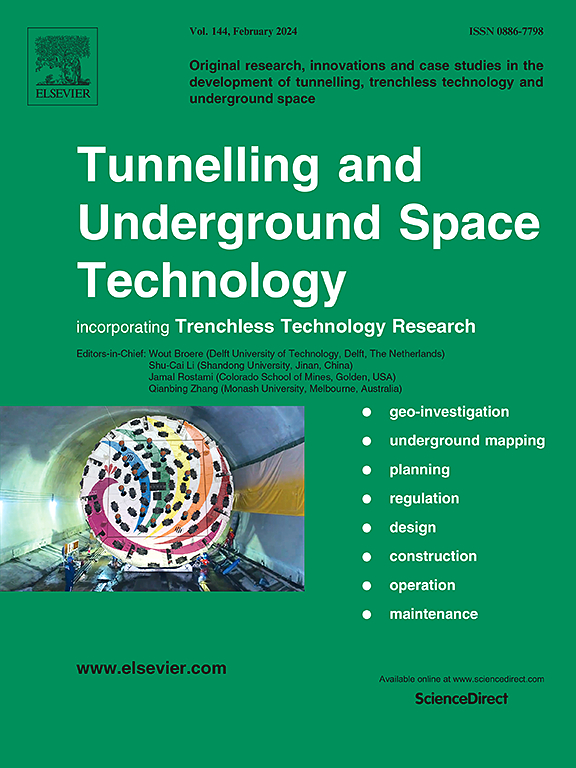Real-Time assessment study of individual thermal stress in high-temperature tunnel based on integrated weight-TOPSIS model
IF 6.7
1区 工程技术
Q1 CONSTRUCTION & BUILDING TECHNOLOGY
引用次数: 0
Abstract
In high-temperature semi-enclosed tunnel work environments, labor can have adverse effects on worker health. Therefore, conducting real-time and effective assessment and early warning of individual heat stress in high-temperature environments is crucial for occupational health protection. Real-time tests of environmental and physiological parameters were carried out during the construction processes of both high-temperature and normal-temperature tunnels. Based on on-site measurement data, an integrated weight-TOPSIS model was established to assess individual heat stress in high-temperature tunnel environments. The model selected five environmental parameters (air temperature, black globe temperature, natural wet bulb temperature, relative humidity, wind speed) and two physiological parameters (skin temperature and heart rate) as evaluation indicators. An index named the TSIcw was proposed to assess heat stress in real-time. Results indicated that heat stress is significantly influenced by air temperature, relative humidity, and dry bulb temperature. The evaluation results of TSIcw showed good consistency with indicators like WBGT, validating its effectiveness in analyzing environmental and physiological parameter data during tunnel construction. TSIcw was categorized into thermal stress risk levels: low risk range of 0.83–1, moderate risk range of 0.58–0.83, and high risk range of 0–0.58. Utilizing TSIcw allows for real-time assessment of individual heat stress levels in high-temperature tunnel environments, providing valuable reference for protecting the health of workers in such conditions.
基于权重- topsis综合模型的高温隧道单项热应力实时评价研究
在高温半封闭隧道工作环境中,劳动可能对工人的健康产生不利影响。因此,对高温环境下个体热应激进行实时有效的评估和预警,对职业健康防护至关重要。对高温和常温隧道施工过程中的环境和生理参数进行了实时测试。基于现场实测数据,建立了综合权重- topsis模型,对高温隧道环境下的个体热应力进行评估。模型选取5个环境参数(空气温度、黑球温度、自然湿球温度、相对湿度、风速)和2个生理参数(皮肤温度、心率)作为评价指标。提出了实时评价热应激的TSIcw指标。结果表明,空气温度、相对湿度和干球温度对热应力有显著影响。TSIcw的评价结果与WBGT等指标具有较好的一致性,验证了TSIcw在分析隧道施工过程中环境和生理参数数据方面的有效性。TSIcw被划分为低风险范围为0.83-1,中等风险范围为0.58-0.83,高风险范围为0-0.58。利用TSIcw可以实时评估高温隧道环境中的个体热应力水平,为在这种条件下保护工人的健康提供有价值的参考。
本文章由计算机程序翻译,如有差异,请以英文原文为准。
求助全文
约1分钟内获得全文
求助全文
来源期刊

Tunnelling and Underground Space Technology
工程技术-工程:土木
CiteScore
11.90
自引率
18.80%
发文量
454
审稿时长
10.8 months
期刊介绍:
Tunnelling and Underground Space Technology is an international journal which publishes authoritative articles encompassing the development of innovative uses of underground space and the results of high quality research into improved, more cost-effective techniques for the planning, geo-investigation, design, construction, operation and maintenance of underground and earth-sheltered structures. The journal provides an effective vehicle for the improved worldwide exchange of information on developments in underground technology - and the experience gained from its use - and is strongly committed to publishing papers on the interdisciplinary aspects of creating, planning, and regulating underground space.
 求助内容:
求助内容: 应助结果提醒方式:
应助结果提醒方式:


